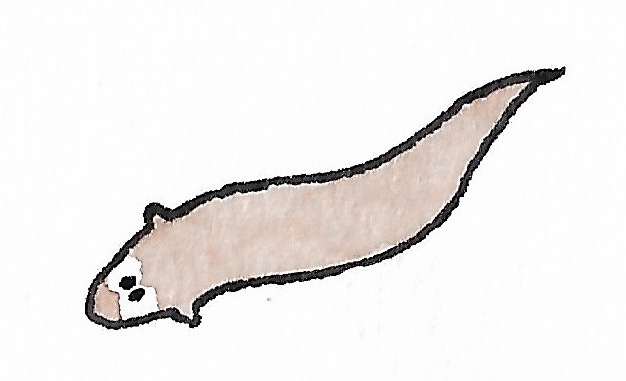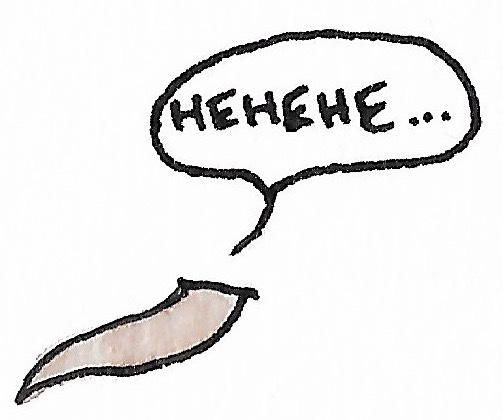Planarians I
The best worms
In 12th grade, I took a class on Animal Behavior. It was the first time since elementary school that I was in contact with live animals that weren’t pets, and this made me very happy. We studied beta fish, Madagascar hissing cockroaches (who probably deserve their own story, now that I think about it), and honeybees, and it was great. But the animal that most stood out to me were the flatworms.
Flatworms, or planarians, as is their more scientific-sounding name, are these little worms with pointed heads. I remember we were given a handout, one of those sheets of information with very simple diagrams and drawings that are constantly being given out in North American schools. I looked at the handout and laughed, because the illustrator had, for some reason, chosen to make a caricature of the worm instead of portraying it realistically.
That’s so weird, I thought. I wonder what they actually look like.
They look exactly like that. Cross-eyed and everything.
If you don’t believe me, see the link at the bottom of this story, and you’ll see what I mean.
After my initial delight had diminished enough for me to pay attention to the class, I learned something else about planarians that was to stay in my brain forever: they can fully regenerate after being cut. And unlike lizards, who can regrow a tail that has been lost to an enemy, it isn’t just the planarian’s head that regrows a tail — the tail regrows a head as well.
Which is very, very weird.
No matter how small a piece gets cut off, both parts will regrow the missing components. If 1/200th of a planarian suddenly finds itself in need of the other 199/200ths, it doesn’t give up hope. It simply regrows them.
This is like your finger regrowing a whole new you when it gets chopped off.
Incidentally, this is also how they reproduce. The technical term for it is fission, and basically the worms stretch themselves (sometimes by sticking onto a surface and pulling) until they split into two pieces, and then both pieces turn into a new worm and you end up with two.
How does this work? It makes some amount of sense for a head to regrow a tail, since planarians have a brain and it’s conveniently located in their heads. But how on Earth does a tail know to regrow a head?
The short answer is, we don’t fully know. There is a guy named Dr. Mike Levin who studies them and thinks the answer has something to do with electrical impulses.
But that’s a story for next week.
For pictures, click here; for a dense but well-written article, click here.









Marvellous and entertaining science writing, Viola. You managed to draw me in quickly and keep me with you as you educated and entertained. Well done! 👏👏👏